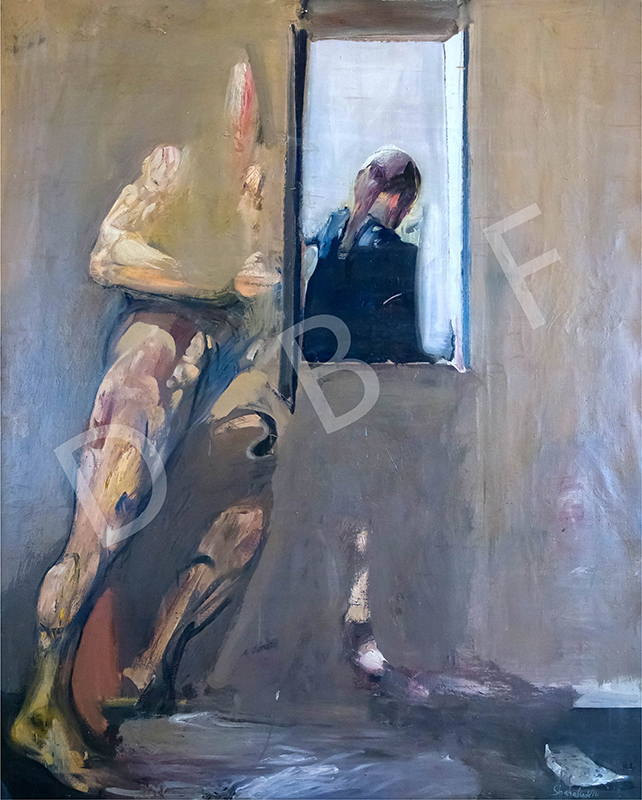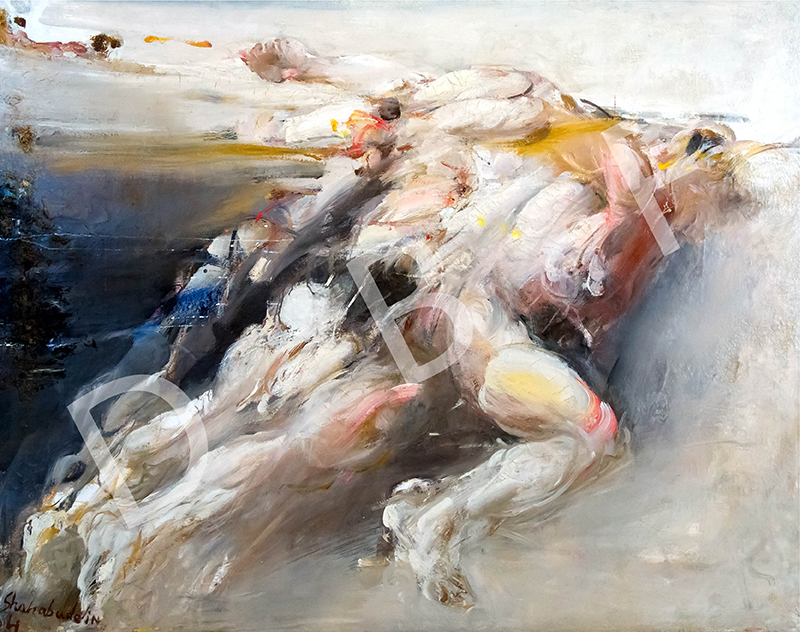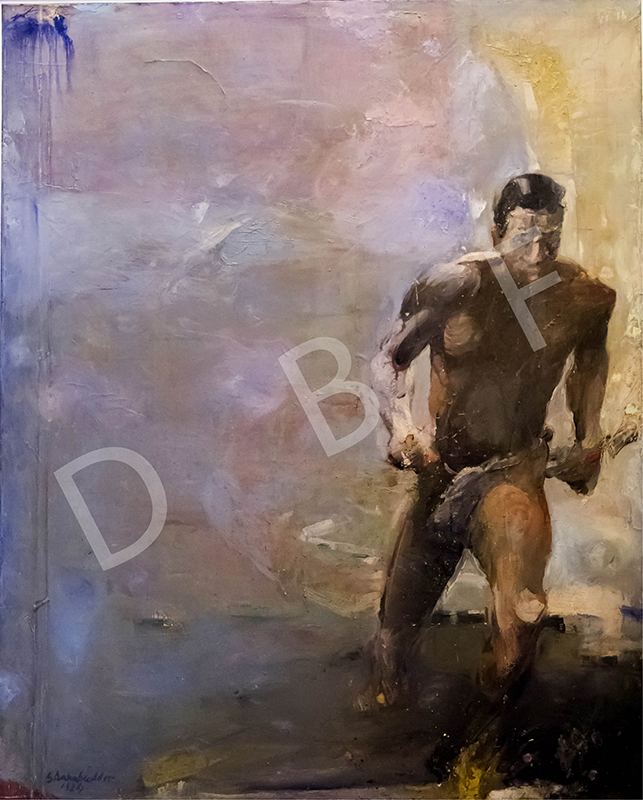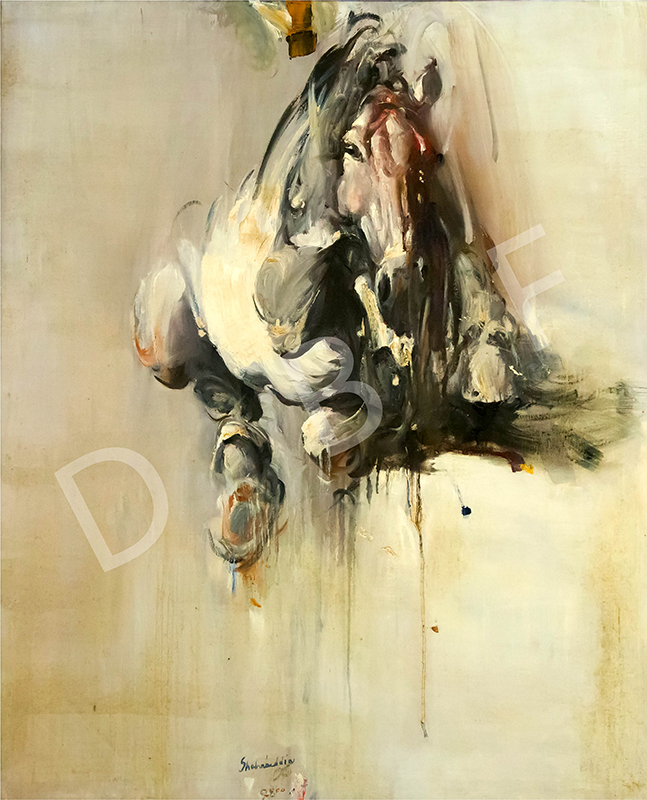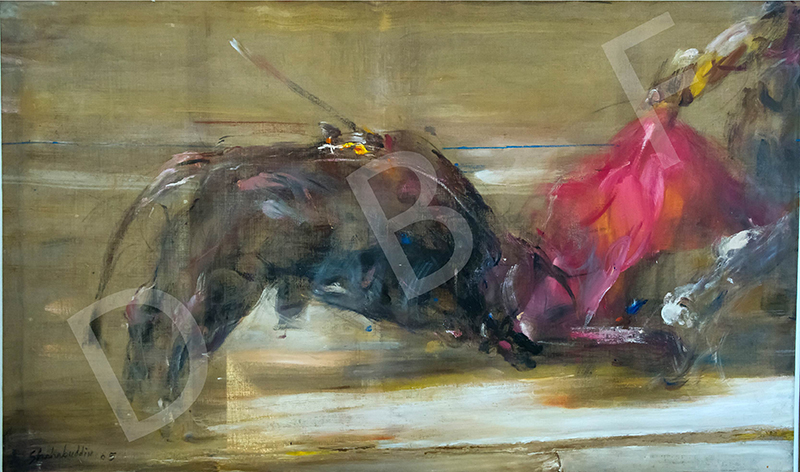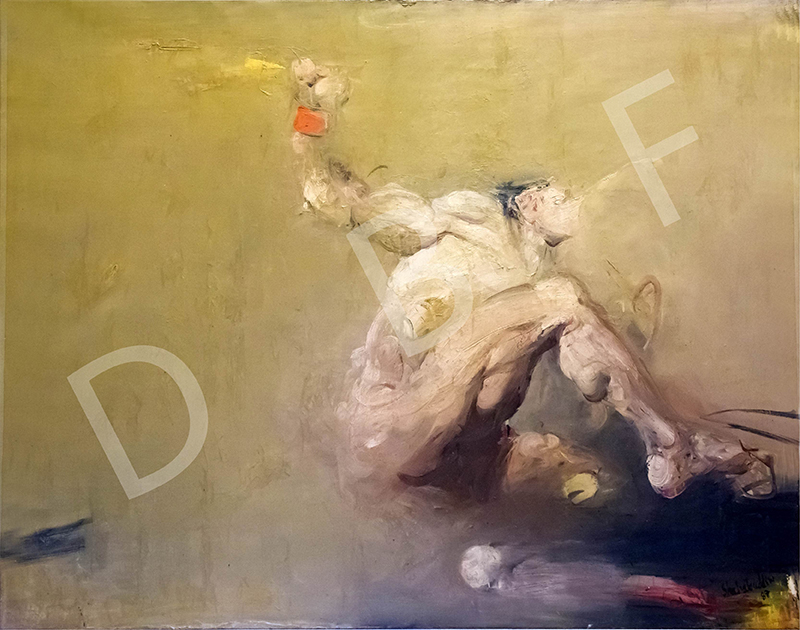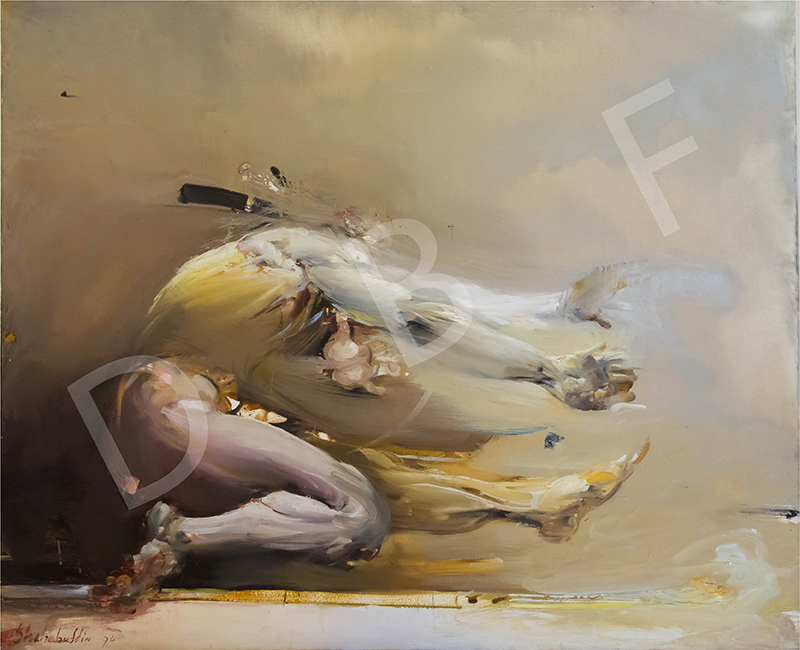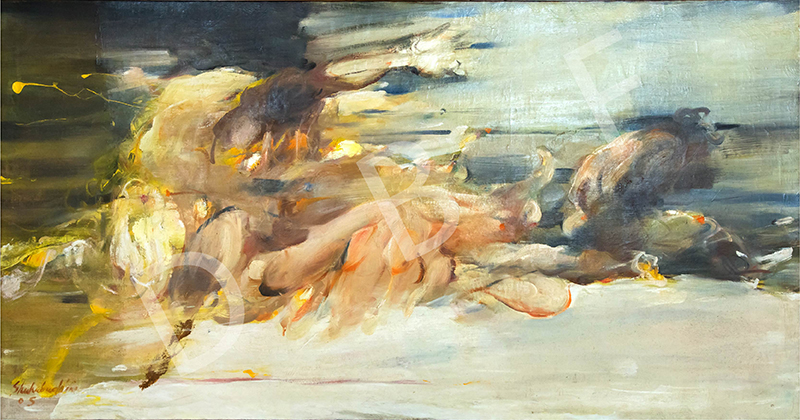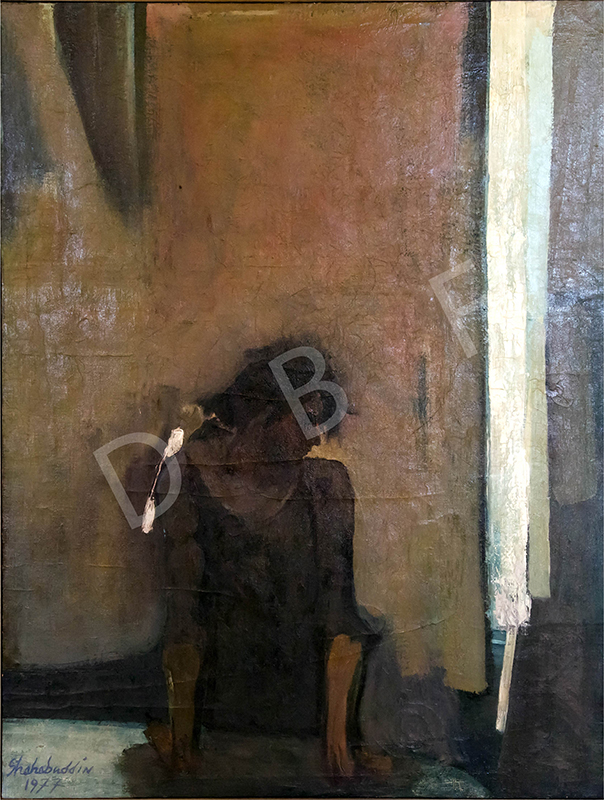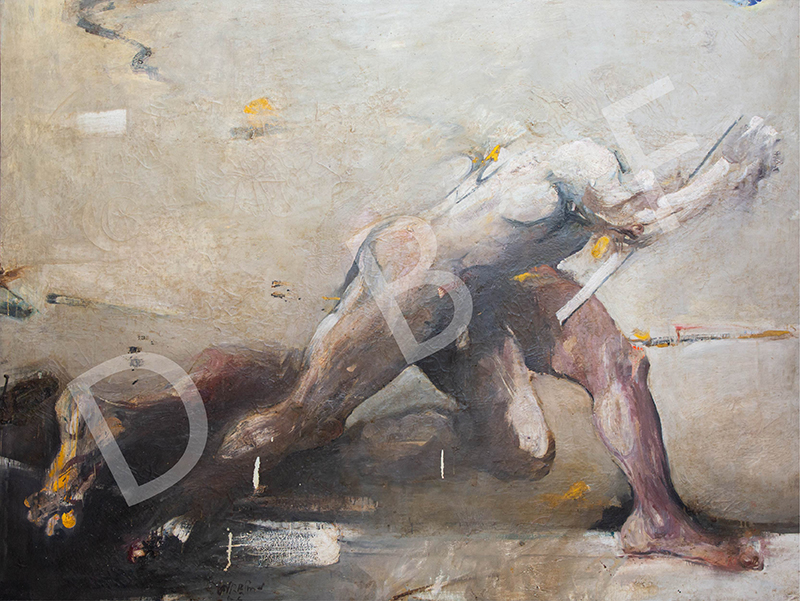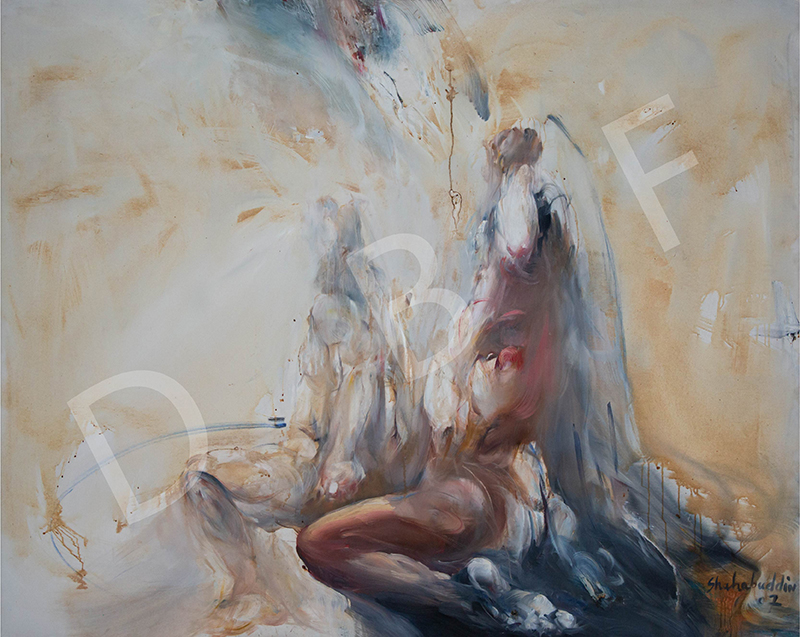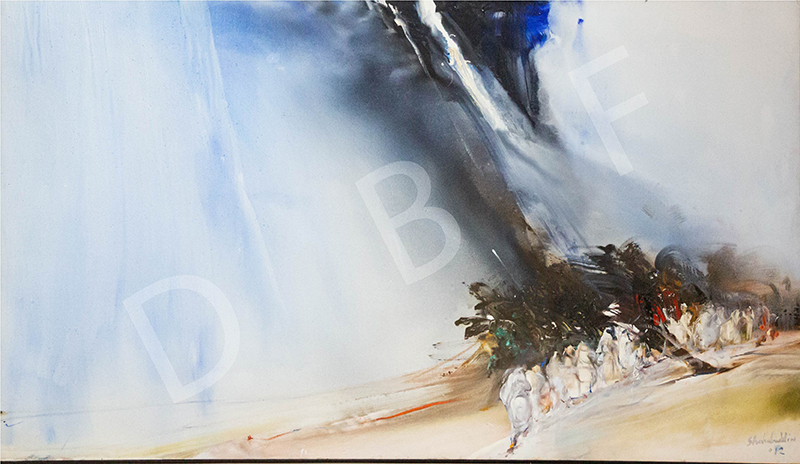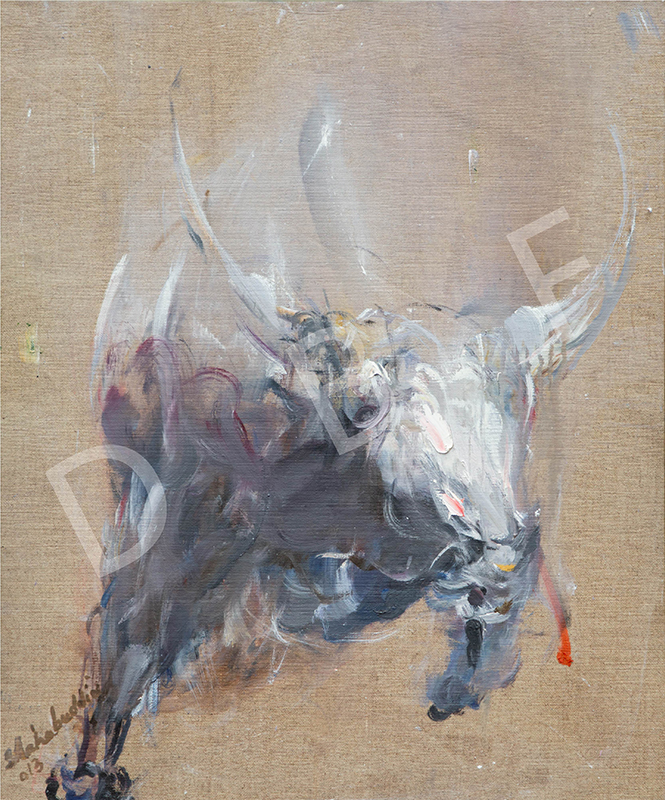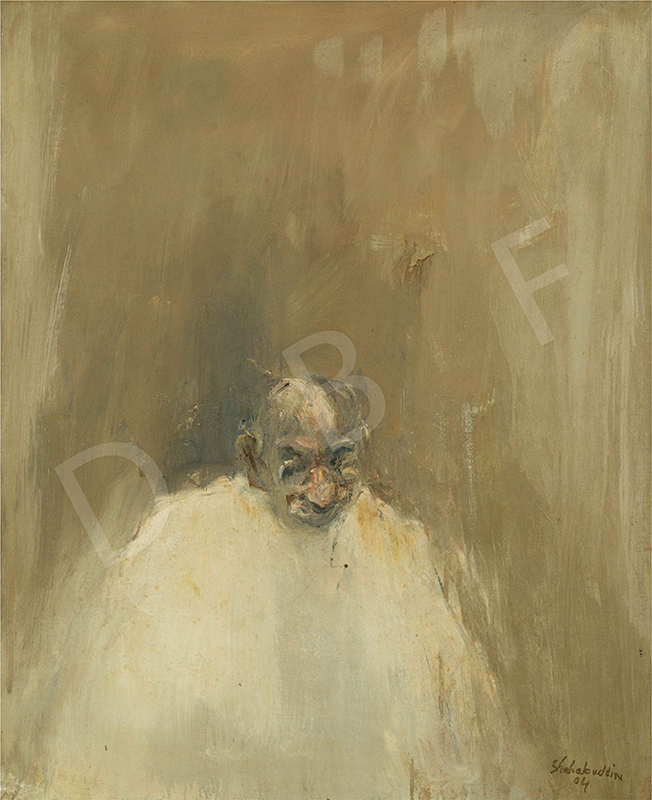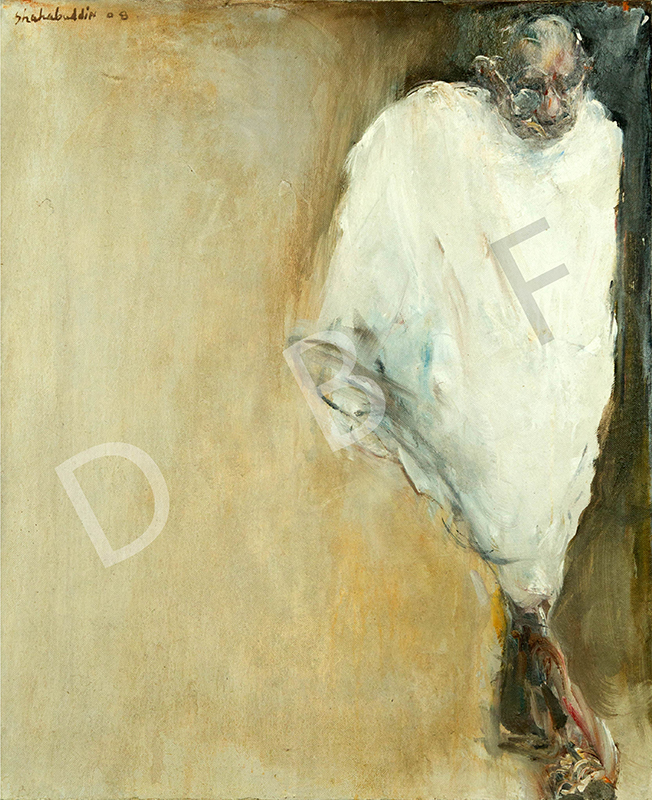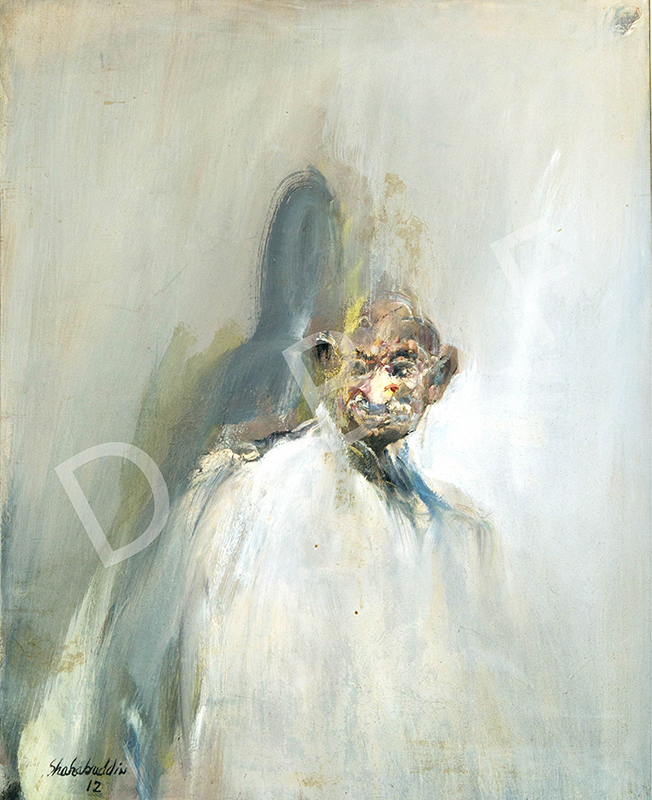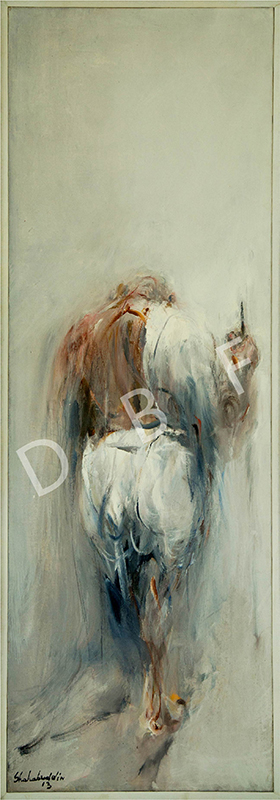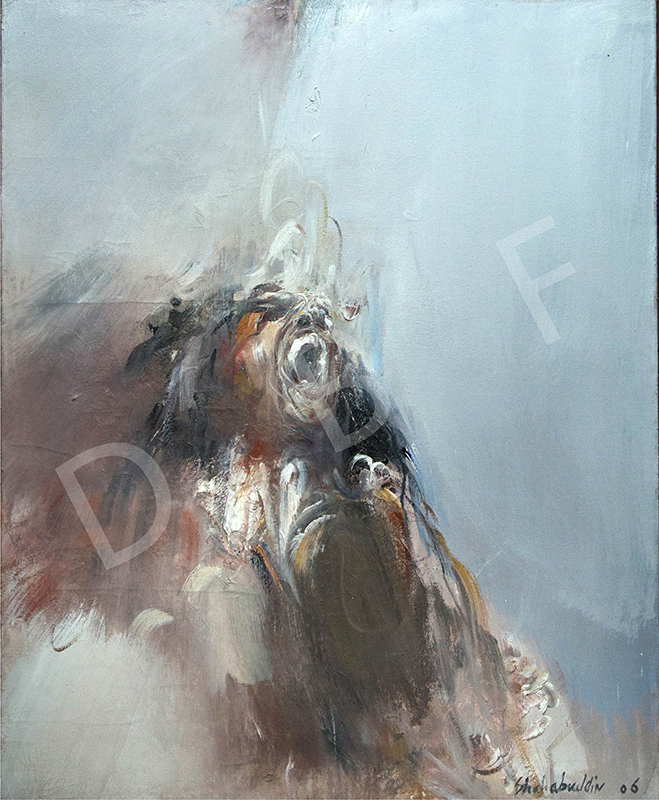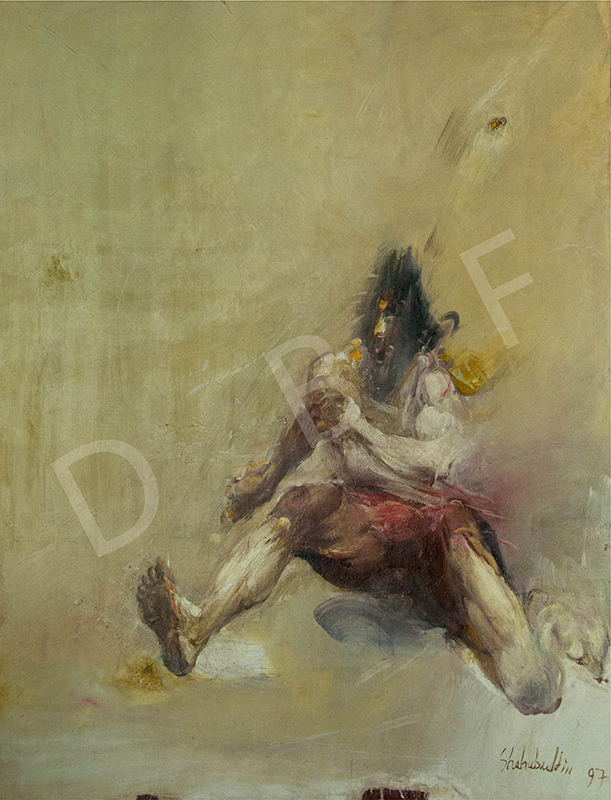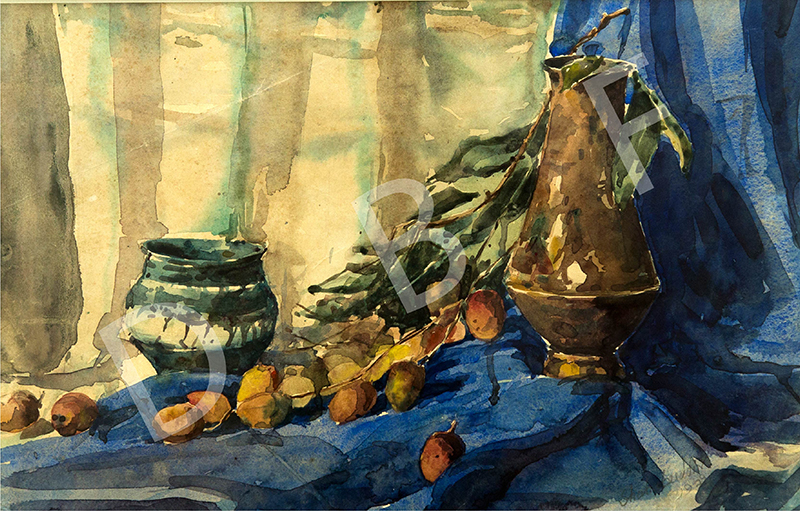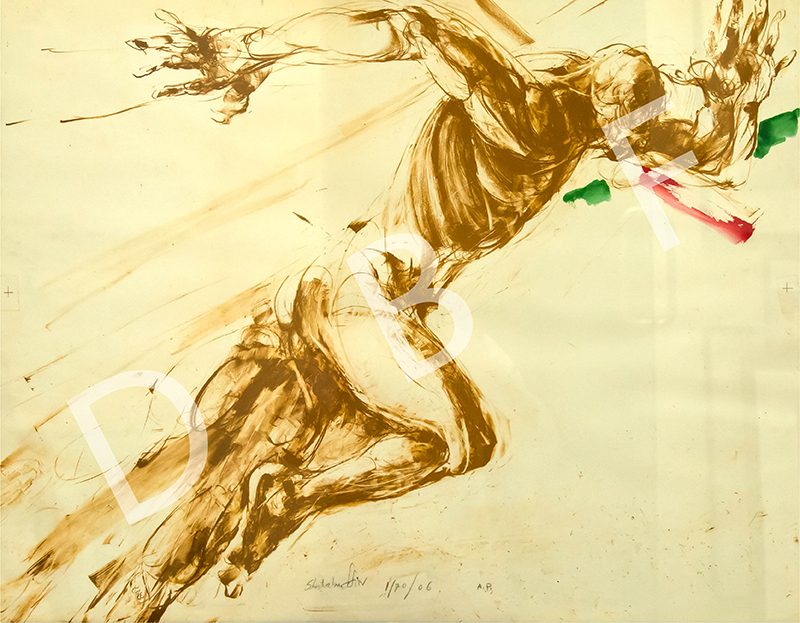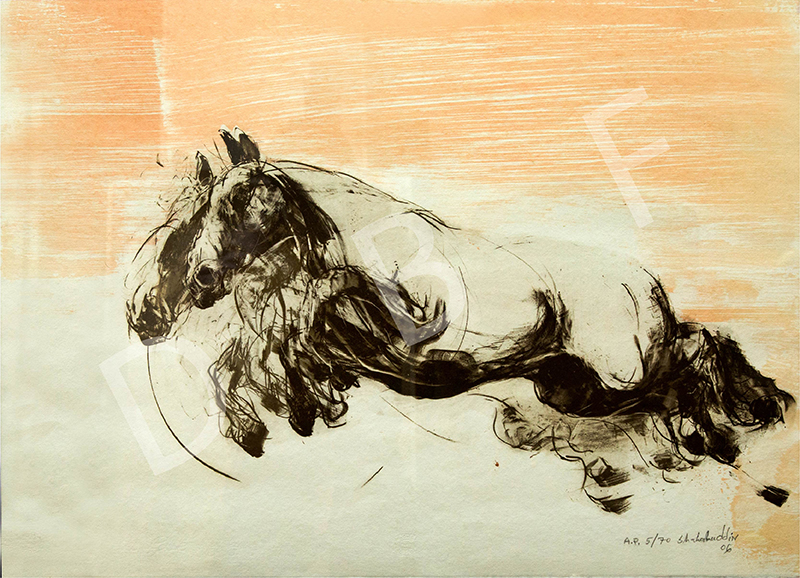“Escape” reveals the human side of existing and tells us of a conflict that is born from our sense of duty and desire. In this 1991 painting, Shahabuddin Ahmed paints us a picture of our deepest fear, failures and reality of life. Life and its never-ending battles leave us with scares and the desire to not exist comes to life. When failures hit us hard and leave us bruised with reality, we want to run away from pain, desire, dream, loss, happiness and every sort of emotion, just so that it won’t hurt us anymore. In this oil on canvas painting, the artist portrayed just that. The raw emotion that we all feel, the reality we try to shy away from.

Shahabuddin Ahmed
Escape


Victory
16 years after fighting in the liberation of Bangladesh he painted “Victory”. 16 years after independence he tells us, victory is not all joy and celebration but also the horror, frustration, endless cycle of pain, loss and the conflict of being. The color red expresses our journey, the hurdles and our never-ending desire to put an end to all this. While the figure in action tells us how victory isn’t something everlasting or permanent, rather it keeps changing meaning. The moment you are done fighting one monster, another monster is rising somewhere. The boldness in the background gives meaning to the dizziness of the figure and gives us a strong message that life is a war-zone and we all are warriors. In this ever-changing struggle of life, the only thing that remains the same is we will always have one some battle to fight.
Movement
“Movement” is a 1994 oil on canvas painting by Shahabuddin Ahmed. In his painting he showed that even when we slice time in the tiniest fragments, something or other will always be in action. The truth of life lies in moving forward, in doing something and never stopping. The blurry lines of figure and beige background slows us only to realize, everything in life is always in motion. No matter how hard life hits us, standing still can’t bring back all that we have lost, all that could happen and all that slipped away from our hands. To control life is to move forward, to keep working and to repeat the process again and again. This painting shows the power of movement and life long effort and suffering that can only end with life.


Reminiscent of Liberation
If we trace back to the onset of Shahabuddin’s stylistic awakening, there is a heavy influence of the European movement which he was exposed to during his study in France. After the independence of Bangladesh , Shahabuddin was granted a French scholarship to study at Paris’s Ecole des Beaux-Arts in 1974. Among 14 other recipients, he was the only one to have received the art scholarship. Ruminating on the canvas he executed while residing in the south of France, he shares, “I was enrolled in a French-language school and was lodging in a house on the beachside. My hosts were extremely accommodating, they even supported me to source art supplies for my paintings. This was only a few years after the liberation war. Having experienced the atrocities of war threatening my identity and artistic freedom, my oeuvre was reflective of the fight for freedom. I wanted to depict the human sufferings in defiant postures and borderline situations which pushes an individual to his limits.”
Artist Art Style
Ahmed’s painting style is iconic, standing out from the work of all his fellow Bangladeshi artists. He has a distinct oil-on-canvas style heavily influenced by European artists. It is argued that Shahabuddin is greatly inspired by European artists from the 1980s, especially that of Francis Bacon.
Ahmed’s works rely on minimalism and stark realism. Despite his European style, he always addresses his subject matter as something closer to home. His works are often described as “…baroque-like figures turned towards space seeking light and energy.” In his work, the subject is suspended in a mass of monochrome blank space and consists mostly of earthy tones, with perhaps one pop of color. His work is also described as “…figures [that] seem to be enthralled in the cosmic dance, at times merging with the ethereal forces.”
One of Ahmed’s most popular works of art is “The Freedom Fighter,” depicting a figure in motion. This is another characteristic of his works—his subjects appear to be in motion, with parts of the subject always in a blur, gently mixing in with the background. However, some parts of the subject are always distinctively in focus, to the extent that you can differentiate every muscle and sinew present in it in perfect proportion. This is one of the aspects of Shahabuddin’s art that sets him apart from his fellow contemporary artists from Bangladesh. His work is described as “The imagery of fearless human figures, which are in the motion of running, seems to burst free from their skin with their flesh, blood, and sinew…”
Although much of his works are about the Liberation War, Shahabuddin has declared that he detested violence, and his art was representative of the struggles he had to overcome as someone who was involved in the war. He also painted many portraits of important figures such as Sheikh Mujibur Rahman and Mahatma Gandhi.



